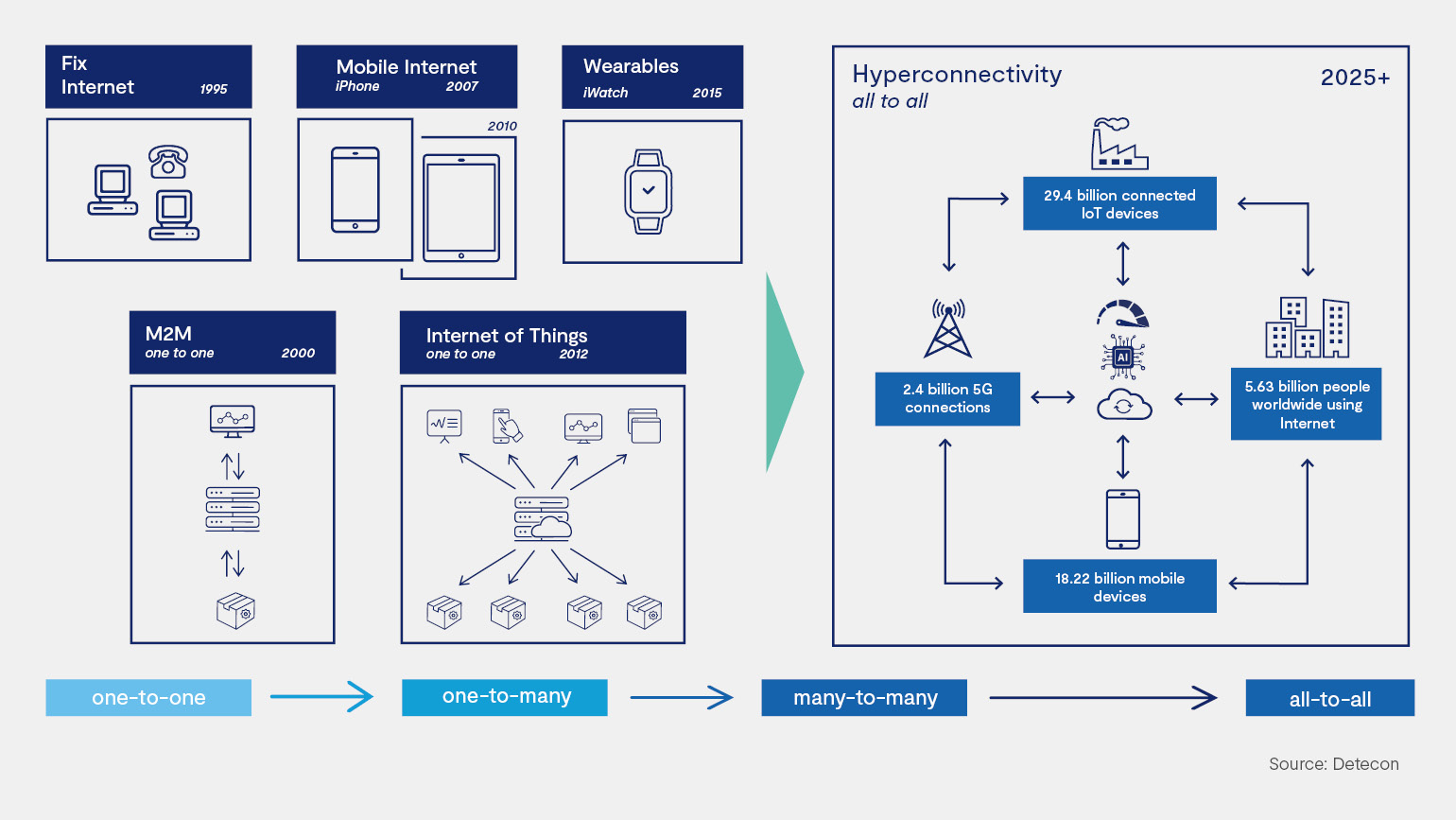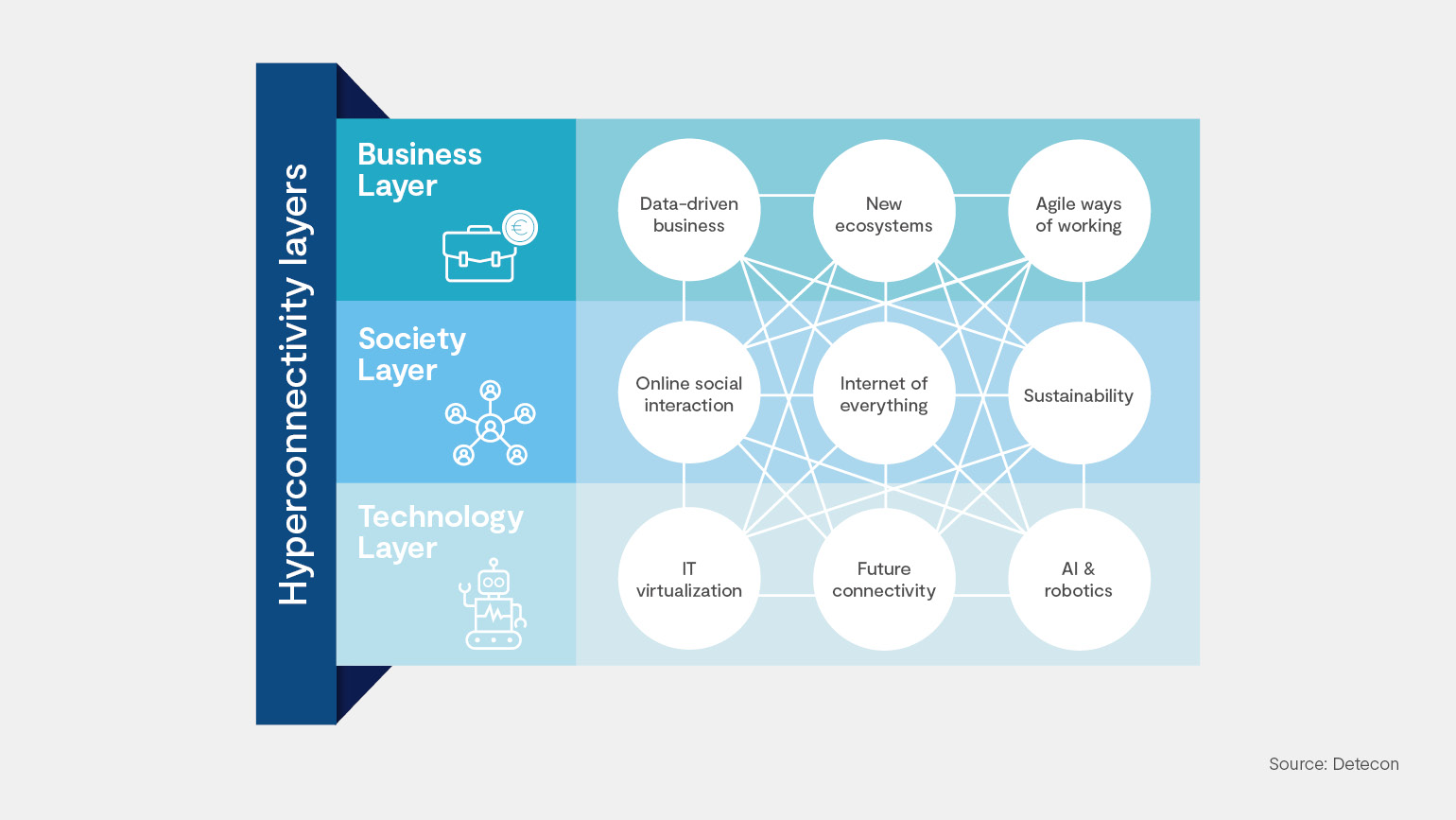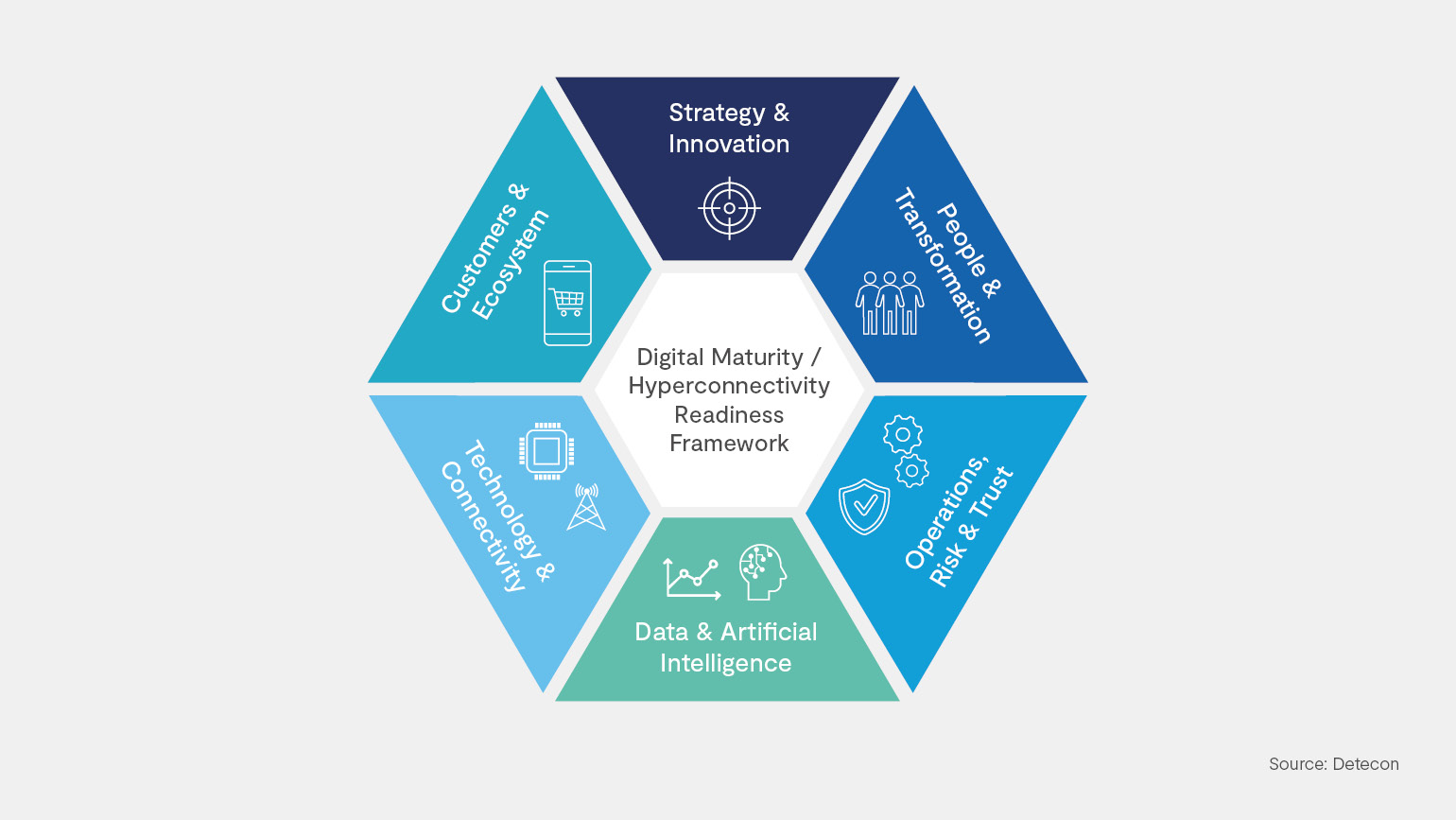Are you familiar with the term "hyperconnected world"? If not, you're missing out on the next big thing. While we've grown accustomed to hearing about the Internet of Things and Industrial Internet in recent years, hyperconnectivity is poised to bring about even more significant changes, not only in technology but also in societal paradigms and business models.
The term hyperconnectivity was first coined by Canadian social scientists Anabel Quan-Haase and Barry Wellman at the beginning of the 21st century. It arose from their studies of person-to-person and person-to-machine communication in networked organizations and societies. Their definition states that "hyperconnectivity enables connections between the world of people, machines, and beyond, which will be realized with even faster speed."

But why should companies and organizations care about hyperconnectivity and the hyperconnected world? To answer that question, let's use the Hyperconnectivity sandwich concept, which an expert team at Detecon has developed with our more than 40 years of industry experience.

The three main layers of the sandwich concept are:
- Technology
- Society
- Business
Technology is the main enabler for a hyperconnected world, bringing new possibilities and changing the way society interacts. These changes in technology and society are mirrored in the business layer.
Hyperconnectivity use case: car tracking
Let's take the example of car tracking for fleet management, which has been used for more than 20 years. Originally, it was a feature used only by drivers and fleet managers and operators. With the rise of smartphones and fast 4G internet, new ride-sharing companies enabled customers to order car transport service online in a super-fast way. As an add-on, they also enabled users to see the car's location in real-time in the application. This completely changed customer interaction and behavior, as people no longer had to wait on the street, unsure if the car was already on its way or stuck in traffic.
The usage of new technology and a new business model changed customer behavior and pushed classical taxi providers to develop their own applications to become more customer-friendly. Those who didn't adapt quickly enough are already out of business. With the progress of technology, it's no longer necessary to install an expensive car tracking unit; drivers' phones or tablets can do the work. The usage of data from the cars helps companies build predictive models, ensuring that they can cover peak times with just enough vehicles. Data models can also find the best car for the customer, combining their preferences and minimizing the environmental impact of the drive.
Artificial intelligence is used to sort out 1st level support and communication with the client to provide them with a reply in real-time. It's a totally different feeling to receive a competent answer even from an AI-powered chatbot immediately, rather than waiting two to three days for an email or a return call from a service center.
Virtualization of the IT environment enables companies to scale, and agile, lean companies can react quickly to customer needs. Cloudification and usage of APIs enable easy exchange of data between different sources and even between companies, creating totally new ecosystems and business models. This is already visible in transportation, where virtualization and a data-driven approach enable the combination of different transportation providers and means of transportation in one application.
Furthermore, data from such fleet systems can be used for other purposes, such as city planning, where information about traffic jams can help improve infrastructure. Another example is using data from car thermometers to identify overheating spots in cities.

Hyperconnectivity Readiness Framework
In today's rapidly changing and connected world, Hyperconnectivity has become a crucial factor in driving emerging technologies, fostering innovation, shaping new ways of working, and setting trends. To thrive in this rapidly evolving landscape, businesses must embrace innovative approaches to harness the power of hyperconnectivity. The Detecon Hyperconnectivity Readiness Framework provides the basis for this.
Recognizing this need, Detecon has developed the Hyperconnectivity Readiness Framework, a holistic industry-independent model that enables organizations to navigate the complexities of hyperconnectivity effectively.
More to come with hyperconnectivity!
The possibilities of hyperconnectivity are far-reaching, and the emergence of modern 5G mobile networks has only expanded them. In addition to being faster, 5G also offers low-latency, real-time reaction capabilities.
This feature is particularly important for the transportation industry, where it can facilitate the use of autonomous driving cars and their communication with real-time traffic management systems. Currently, most transportation systems operate with rather fixed flow models, resulting in delays and traffic jams. However, fast connectivity and the implementation of artificial intelligence can help to prevent such issues and make our journeys smoother and more efficient.
Are you ready for the hyperconnected world? What are your experiences with hyperconnectivity?
Feel free to contact me and share your experiences - I look forward to exchanging ideas with you!







